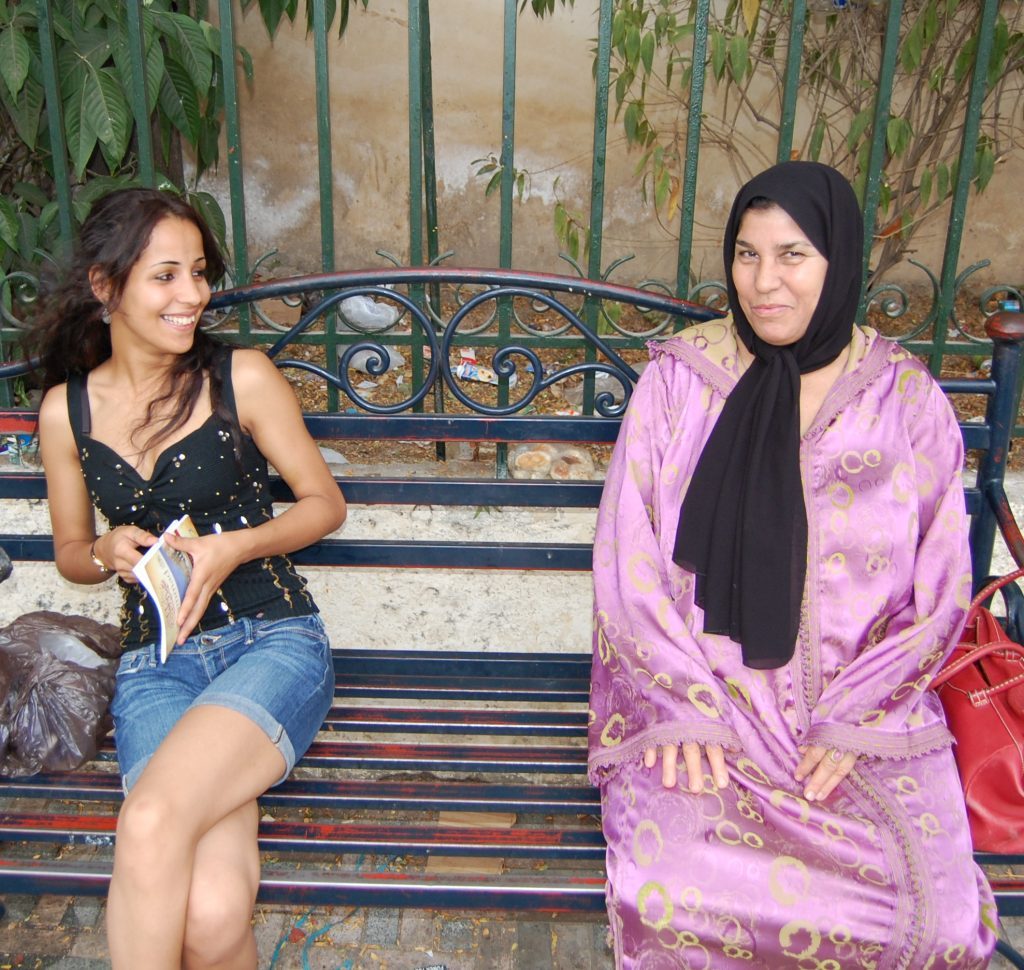During the three months I spent traveling in Morocco, I stayed for 30 days near a beach town called Mehdia. The focal point of Mehdia is Plage Mehdia – an enormous beach located on the southern bank of the Sebou River, near Kenitra. My objective there was mostly surfing however, me and my Moroccan friend decided to take a week off and visit Meknes and Fez. This post will focus on the highlights of our Fez, Morocco adventure such as Fes El Bali, Bab al-Mansour, Jnane Sbil Gardens and other locations we visited in Northern Morocco.
Brief Introduction to Fez and Meknes
Modern day Fez is the second largest city in Morocco with a population of 1.1 million. Additionally, Fez has a very long history. Indeed, Fez was initially established as the capital of the Idrisid Dynasty in 8th – 9th century. Fortunately, the ancient architecture and infrastructure is well preserved inside the Fes El Bali “Medina of Fez”. As a result, the old quarter known ad Fes El Bali would be our primary destination.
Fes El Bali is located in the NE section of modern Fez with a population of 156,000. It was inscribed as a World heritage Site in 1981 as the “Medina of Fez” and it is the largest car free urban area in the world.
Located about 60 kilometers to the west is Meknes, which is the sister city of Fez. Meknes boasts some of the same attractions as Fez such as an ancient medina, venerable mosques and souqs.
Indeed, Meknes is a warm up act for ancient ambiance of Fez. Nonetheless, Meknes is an ideal stop over and it is well worth a visit. As such, we spent 2 days in Meknes and 3 days in Fez, Morocco.
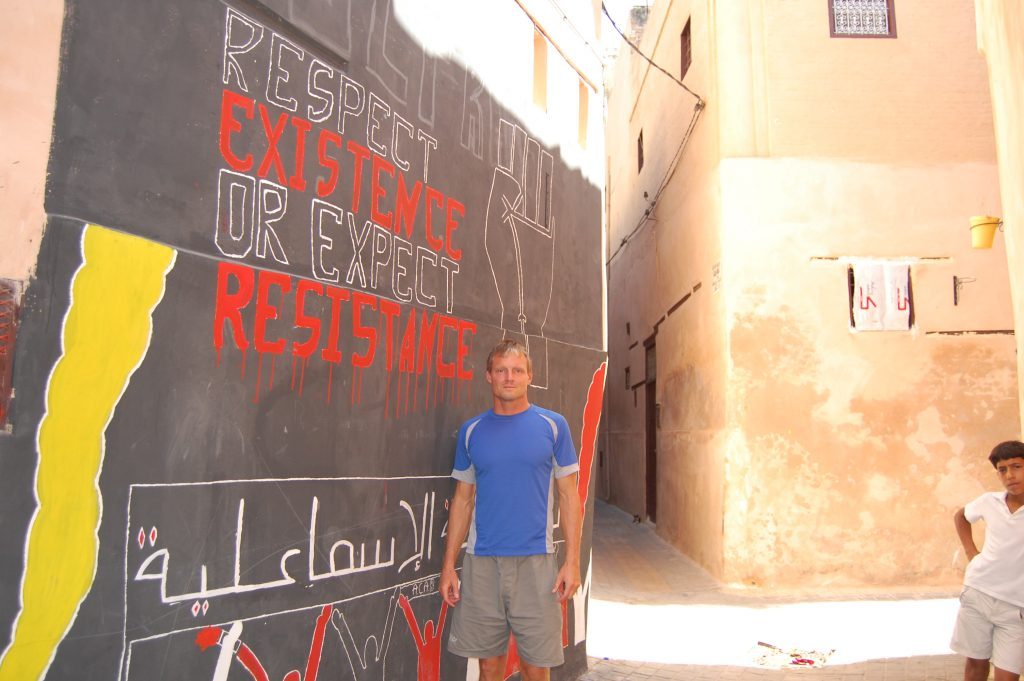
Bab al-Mansour Meknes, Morocco
One of the can’t miss attractions in Meknes is the Bab al-Mansour Gate which serves as the dividing line between the ancient medina and imperial Meknes. Although the gate is architecturally outstanding, it’s completion is obscured by tragic royal intrigue.
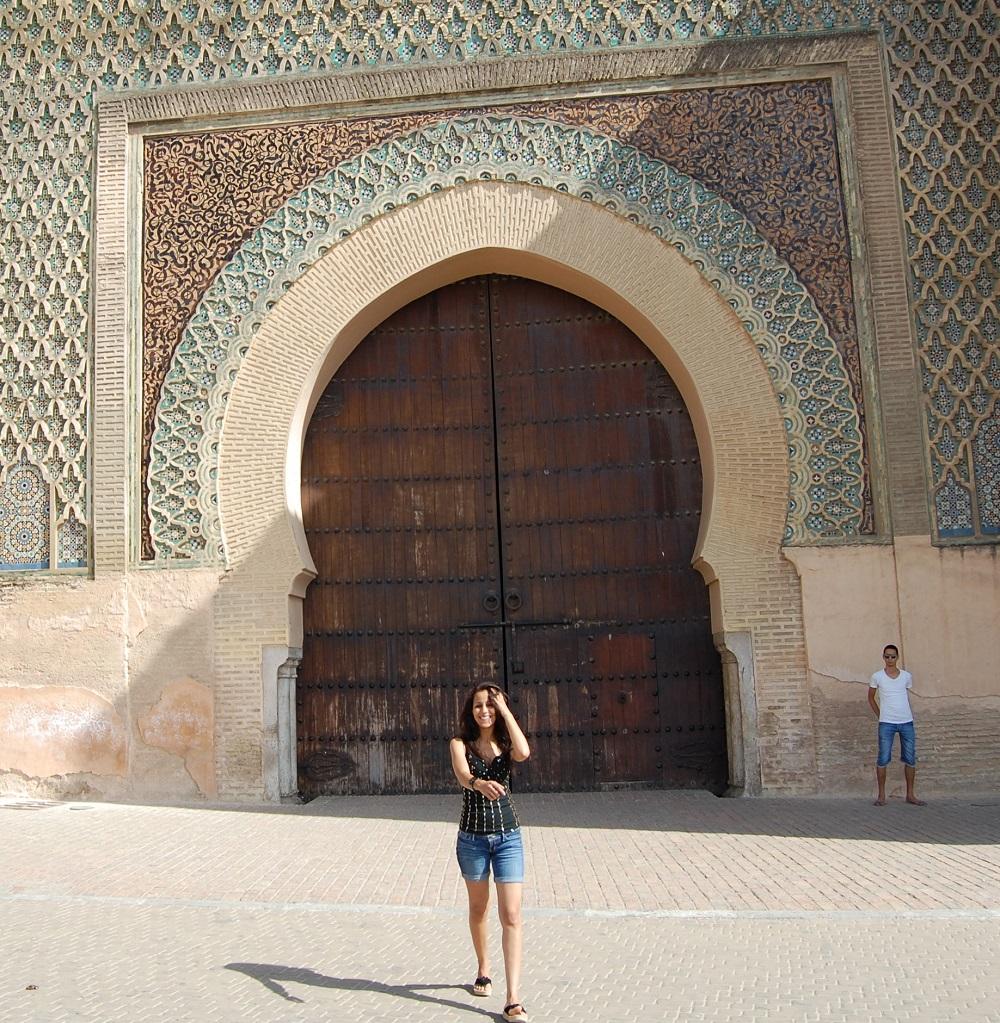
The ruler of ancient Morocco Moulay Ismail ibn Sharif, instructed the architect El-Mansur to build the gate in the 18th century. El-Mansur built the gate to the best of his ability, however, upon completion the sultan asked him if he could have done better? Unfortunately for El-Mansur, he felt compelled to answer yes. As a result, the sultan was enraged and El-Mansur was executed.
The magnificent architectural design of Bab al-Mansour gate is still on display today. Additionally, the original marble pillars that were taken from nearby Roman ruins still frame the gate.
The best time to visit the Bab al-Mansour Gate is in the early evening. Fortunately, the gate is located directly across from Lahdim Square where you can dine al fresco and enjoy the night time festivities. Additionally, there is a large night market located nearby with souqs and all of that.
Plus, if you are looking for hand woven rugs, the Meknes merchants may be a better alternative than the carpet sharks that you will find in Fes El Bali.


Next Stop Fez, Morocco
The next morning we made the short drive to Fez, Morocco. Although Fez is a large city, we were interested in the Fes El Bali which is the original old city development constructed in the 8th-9th century A.C.E.
Fortunately, we found a nice Moroccan riad located a short distance from Bab Bou Jeloud also known as the “Blue Gate”. The Blue Gate is the western entrance to the ancient city of Fez, known as Fes El Bali.
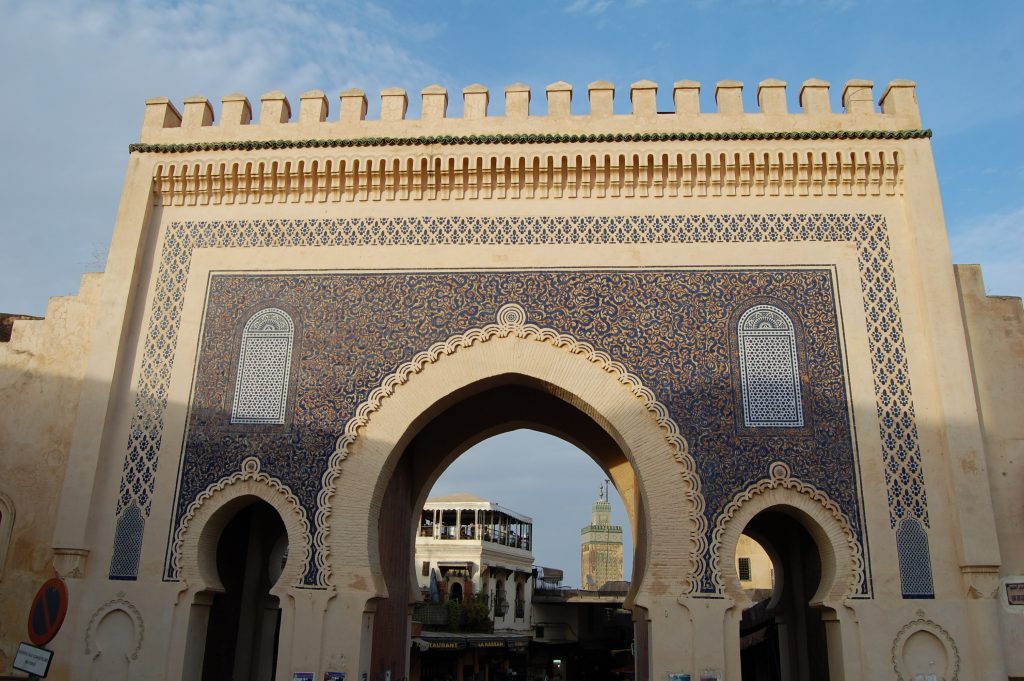
Fes El Bali “Medina of Fez” Highlights
Inside the Blue gate is the old city of Fez, Morocco. Obviously, in the 9th century there were no vehicles. As such, the cobblestone streets are very narrow inside the old city. Therefore, it is like navigating through an ancient labyrinth.
As a result, you really do not know what you will find inside. There are a plethora of cafes, carpet merchants and old style souqs but I was very surprised to find a shop selling authentic lion and leopard skins!
The shop keeper was not present, so we indulged ourselves with some photographs of the controversial items.

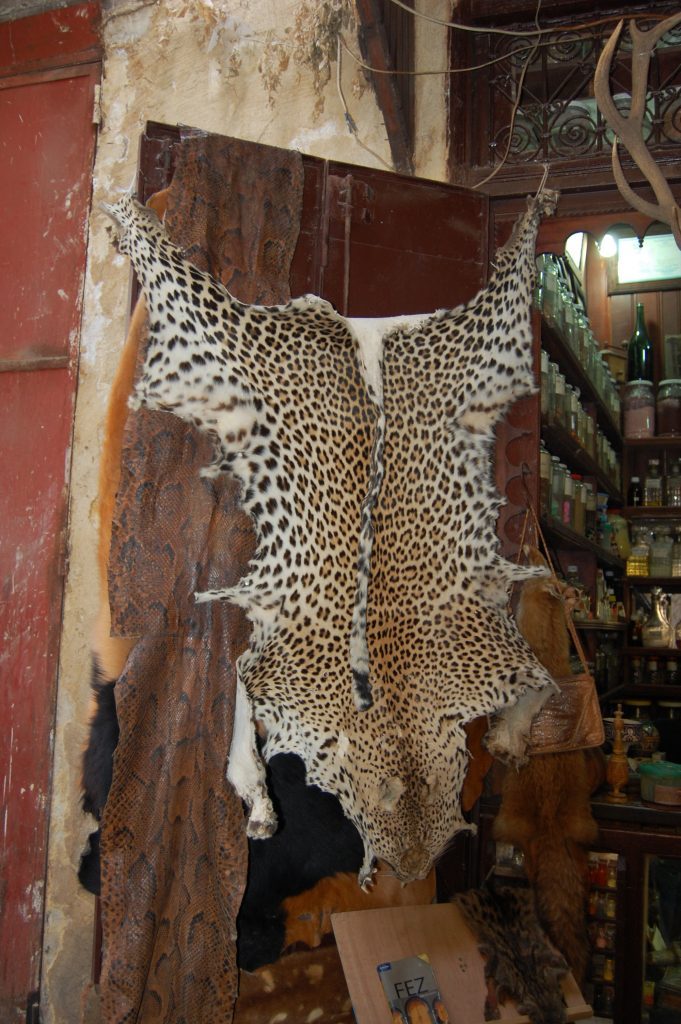

Fortunately, the Medina of Fez is also famous for carpets that do not harm endangered safari animals. Of course, we visited a carpet souq and I bought the compulsory rug after a few cups of delicious Moroccan tea. As usual, the merchant asked me what all of Africa wants to know – What do you think of Obama?
But other than that it was quite fun. The best part was when the owner brought us up onto the rooftop of their shop. From the rooftop, there was an impressing panoramic view of Fes El Bali.

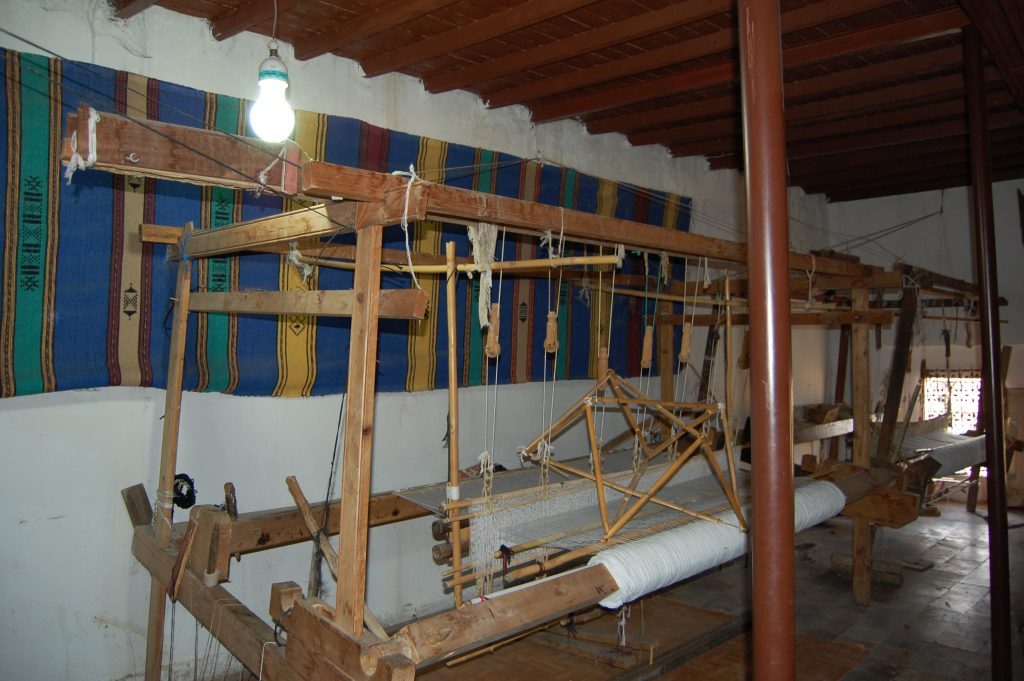

Zawiya Moulay Idriss II
The carpet souq was centrally located inside Fes El Bali, therefore, it was next to the Zawiya Moulay Idriss II (Mosque). Zawiya is a term that means “shrine” or religious complex. This shrine is of particular interest because it is alleged to contain the tomb of Moulay Idriss II.
Moulay Idriss II is the son of Moulay Idriss and also a descendant of the prophet Mohamed. His father was the founder of ancient Fez in 789 A.C.E. however, he died soon afterwards in 791.
His son was born soon after his death and became the ruler of the Idrisid state. Under his rule, the state was greatly expanded and he was integral to the Islamization of Morocco. He died in 828 A.C.E.
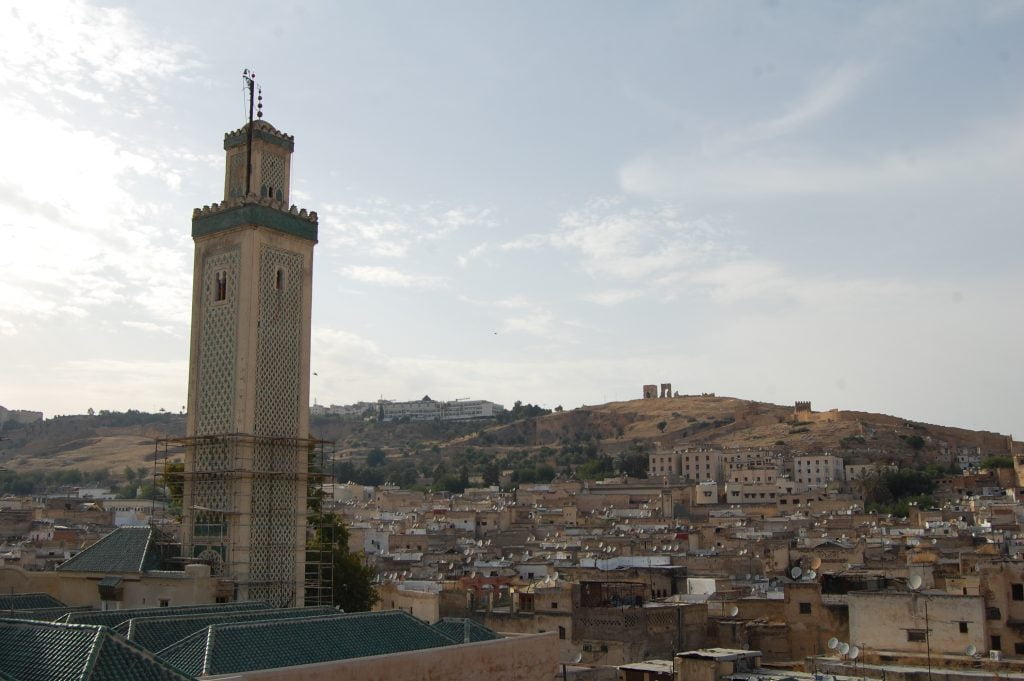


Additional Attractions in Fez, Morocco
The Medina of Fez is by far the highlight of visiting Fez, Morocco. However, it is certainly not the only attraction. Additional Fez, Morocco points of interest include the Jnane Sbil Garden and the Bab Makina.
The Jnane Sbil Garden was created in the 18th century by Sultan Moulay Abdallah. It is a magnificent city park spread out over 7.5 hectares. The garden is one of the most magnificent in Fez. Unfortunately, I did not manage to get there until mid day and since it was mid summer, it was not the ideal time for a visit. As a result, we quickly passed through to do some additional exploring.
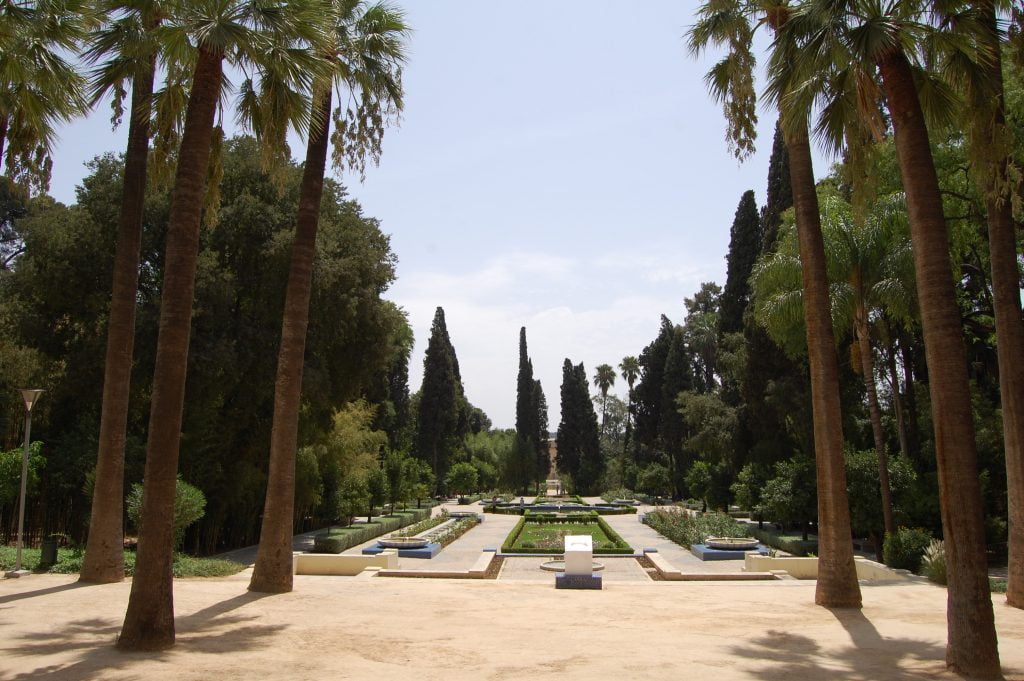
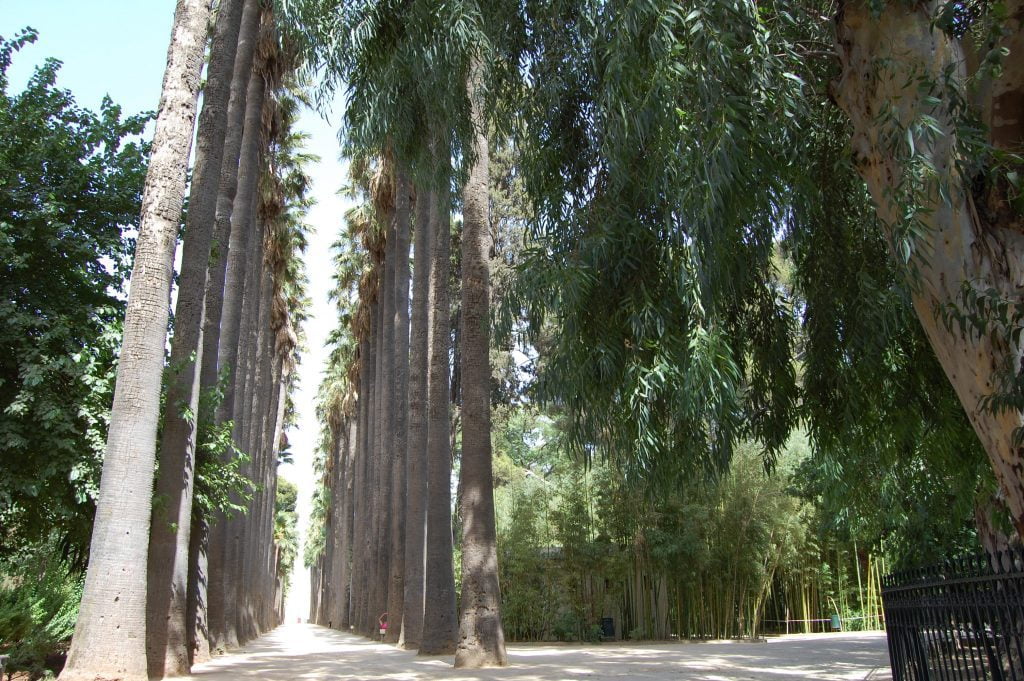
After visiting the garden I kept going hoping to find something unique. I was in luck because I soon stumbled upon the Bab Makina Plaza which is a huge Moroccan style open air theater.
Bab Makina Plaza is perfect for outdoor concerts and it hosts the Moroccan music festivals on a regular basis. There was no shows while we were in town, however the plaza made for some great photos and it was quite interesting because I found it by accident.
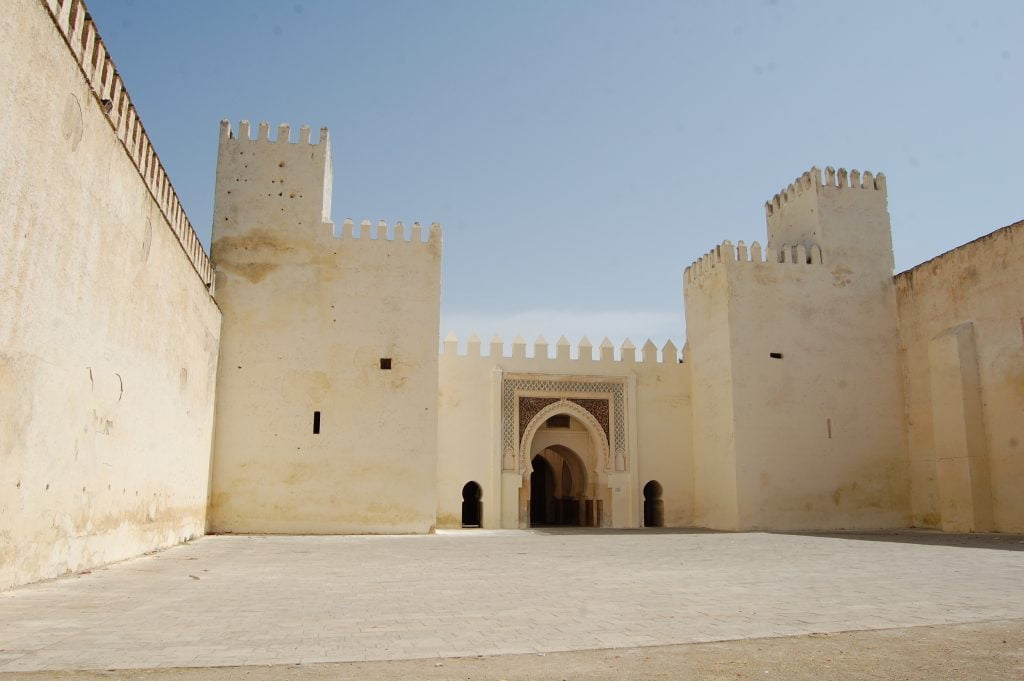

Old and New Fez, Morocco
The main attraction of the Fes El Bali – Medina of Fez, is the stark contrast of such an old city against the background of developing Morocco. An example of the contrast would be the new music festivals set against the ancient backdrop of Bab Makina Plaza.
However, an amusing personification of the contrast occurred when my friend sat next to an older Moroccan woman outside the Medina of Fez. How will the new fit in with the old? It may feel awkward at first but there should be a happy ending – I am sure of it.
